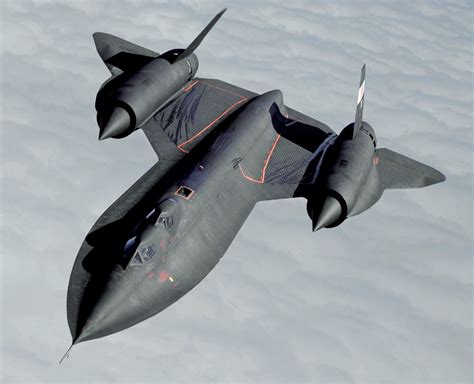In the annals of aviation history, few records stand as enduring symbols of technological achievement as the altitude record set by the MiG-25. On August 31, 1977, Soviet test pilot Alexandr Vasilievich Fedotov soared to an unprecedented height of 123,523 feet (37,650 meters), an achievement that remains unbroken to this day. This remarkable feat not only highlighted the MiG-25’s extraordinary engineering but also put it in stark contrast to other aircraft, including the famed SR-71 Blackbird, which many considered the fastest and highest-flying reconnaissance plane of its time.
In this article, we explore the technical capabilities of the MiG-25 that enabled it to surpass the SR-71 in altitude, the circumstances surrounding Fedotov’s historic flight, and the legacy of this remarkable record that continues to stand tall in the aviation world.
The MiG-25: A Supersonic Wonder
The Mikoyan-Gurevich MiG-25, designated “Foxbat” by NATO, was a supersonic interceptor and reconnaissance aircraft that was built to engage high-altitude, high-speed targets such as the American B-70 Valkyrie bomber. While the B-70 program was eventually canceled by the United States, the Soviet Union continued with the MiG-25 project, leading to one of the most powerful aircraft of its era.
The MiG-25’s design was a product of a specific and unique set of requirements. Unlike most fighter jets, it was built primarily out of stainless steel, a material chosen for its ability to withstand the extreme heat generated by the aircraft’s supersonic speeds. This design choice resulted in a heavy, robust aircraft that, while lacking in maneuverability compared to other fighters like the F-4 Phantom, could excel at speeds and altitudes that no other aircraft of its time could match.
MiG-25 Engine and Performance
The MiG-25 was powered by two Tumansky R-15B-300 engines, which were capable of producing a thrust of over 16,000 pounds. The engines were designed to sustain high-speed flight at altitudes of up to 80,000 feet, but their performance rapidly degraded beyond that limit. This limitation made the MiG-25 unsuitable for sustained combat at extreme altitudes, where its engines would overheat and suffer damage.
This engine limitation was particularly important when considering the MiG-25’s attempt to break the altitude record. In the pursuit of the absolute altitude record, Fedotov piloted a specially modified MiG-25RB that was re-engined with the more powerful R15BF2-300 engine. This modification provided additional thrust, allowing the aircraft to reach extraordinary heights during a “zoom climb” — a technique where the aircraft rapidly ascends in a near-vertical trajectory, exploiting the minimum air resistance at high altitudes.
Fedotov’s Record-Breaking Flight
On August 31, 1977, test pilot Alexandr Vasilievich Fedotov piloted the modified MiG-25RB in an attempt to break the world altitude record. The flight took place over Podmoskovnoe, Russia, and was conducted as a “zoom climb” — a specialized maneuver designed to maximize the aircraft’s performance during the brief moments of high altitude.
The Technique: The Zoom Climb
The zoom climb is a technique used to achieve record-breaking altitudes by flying the aircraft in a nearly vertical ascent, often from a high-speed level flight. The primary objective of a zoom climb is to utilize the aircraft’s maximum thrust in the shortest possible time, achieving the highest altitude before gravity and air resistance overcome the aircraft’s power.
In the case of Fedotov’s flight, the MiG-25RB reached 123,523 feet (37,650 meters) — an altitude that remains unmatched to this day for a jet aircraft flying under its own power. This record was recognized by the Fédération Aéronautique Internationale (FAI), the world governing body for air sports, and has stood as the absolute altitude record for nearly five decades.
The Legacy of Fedotov and the MiG-25
Fedotov’s achievement cemented his place in aviation history. A decorated test pilot, he had already set 15 world records by the time he made the record-setting flight. His expertise and precision in flying the MiG-25 contributed not only to the Soviet Union’s aerospace achievements but also to the broader history of flight records.
In addition to his flight record, Fedotov’s dedication to advancing Soviet aviation technology made him a national hero. He was awarded the title “Hero of the Soviet Union” in 1966 and went on to become a major-general of aviation. Unfortunately, his life was cut short when he died in 1984 during a test flight of the MiG-31. Nonetheless, his contribution to aviation remains profound, particularly in the field of high-speed, high-altitude flight.
The SR-71 Blackbird: A Contender for the Record

While the MiG-25’s altitude record was groundbreaking, it is inevitable to compare it to the iconic SR-71 Blackbird, which was often considered the fastest aircraft of its era. Developed by the United States in the 1960s, the SR-71 was a reconnaissance aircraft designed to operate at extreme speeds and altitudes. With a top speed exceeding Mach 3 and a service ceiling of approximately 85,000 feet, the SR-71 was a technological marvel.
SR-71’s Design and Purpose
The SR-71 was designed primarily for reconnaissance and strategic intelligence gathering. Its ability to fly at altitudes beyond the reach of enemy interceptors and its incredible speed made it the ideal aircraft for high-stakes intelligence missions. The Blackbird could reach altitudes well above those of conventional interceptors, but its maximum ceiling of 85,000 feet was significantly lower than the MiG-25’s altitude record.
While the SR-71 was capable of reaching these high altitudes, it did so by maintaining sustained high-speed flight rather than relying on a zoom climb. Unlike the MiG-25, which was designed specifically to combat high-altitude threats, the SR-71’s design was tailored to reconnaissance, and its primary strength lay in speed rather than vertical performance.
Why the SR-71 Couldn’t Match the MiG-25’s Altitude
The key difference between the MiG-25 and the SR-71 lies in their respective designs and purposes. The MiG-25 was built as a high-speed interceptor capable of operating at extreme altitudes for short bursts of time. This made it ideal for record-breaking altitude flights, but the aircraft’s heavy construction and engine limitations prevented it from maintaining these altitudes for extended periods.
In contrast, the SR-71 was built for sustained high-speed reconnaissance and operated effectively at extreme altitudes, but its design did not allow for the same vertical performance as the MiG-25. While the SR-71 could reach altitudes up to 85,000 feet, its design was not optimized for achieving the kind of record-breaking heights seen with Fedotov’s MiG-25.
Furthermore, the SR-71’s operational capabilities were limited by its reliance on speed, rather than a high climb rate, which meant it could not compete with the MiG-25 in terms of altitude. The SR-71’s engines were designed for speed rather than the ability to sustain a climb to extreme altitudes.
MiG-25’s Enduring Legacy and Technological Influence
Although the MiG-25’s altitude record remains unbroken, the aircraft’s design and technological innovations continue to influence modern aviation. The MiG-25 was a precursor to the MiG-31, which was further optimized for air defense and remains in service today in certain air forces.
The MiG-25’s record-setting achievement demonstrated the Soviet Union’s technological prowess during the Cold War, and its legacy lives on in the continued development of high-speed interceptors and reconnaissance aircraft. The aircraft’s role in the Cold War rivalry between the United States and the Soviet Union also cemented its place as one of the most iconic military aircraft in history.
Conclusion
The MiG-25’s absolute altitude record, set by Alexandr Fedotov in 1977, remains a monumental achievement in aviation history. This remarkable feat was made possible by the MiG-25’s powerful engines, robust design, and unique zoom-climb technique, which allowed it to reach altitudes far beyond what other aircraft, including the SR-71, could achieve. While the SR-71 Blackbird remains an iconic symbol of speed and reconnaissance, the MiG-25 holds the title for the highest flight altitude ever reached by a jet under its own power.
Fedotov’s flight represents the pinnacle of Soviet aviation engineering and serves as a reminder of the incredible feats that can be achieved when cutting-edge technology is pushed to its limits. The MiG-25’s record is a testament to the relentless pursuit of innovation and the extraordinary accomplishments that define the history of flight.
















